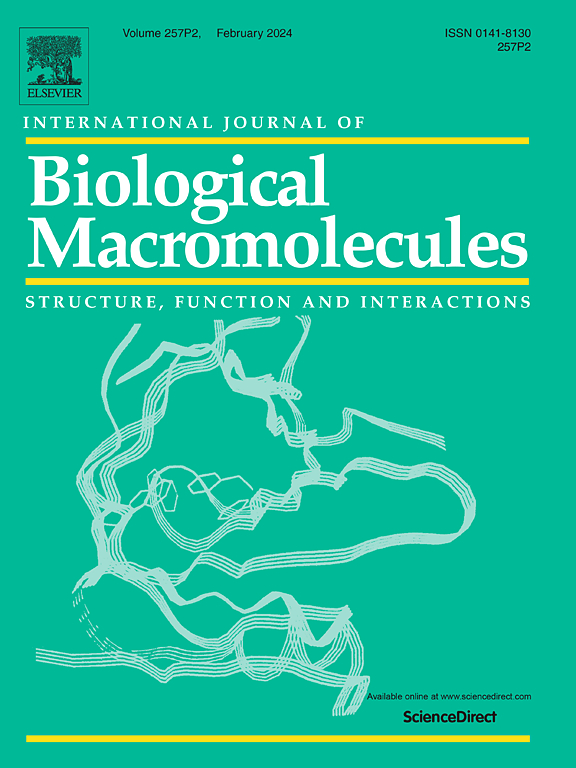将超声技术与负载多柔比星的靶向褐藻素/精氨酸-明胶纳米粒子相结合,提高耐药三阴性乳腺癌的疗效并调节生物效应。
IF 7.7
1区 化学
Q1 BIOCHEMISTRY & MOLECULAR BIOLOGY
International Journal of Biological Macromolecules
Pub Date : 2024-12-01
DOI:10.1016/j.ijbiomac.2024.137764
引用次数: 0
摘要
三阴性乳腺癌(TNBC)因其侵袭性强、复发率高,加上上皮-间质转化(EMT)参与其进展和转移,给治疗带来了巨大挑战。标准化疗通常采用多柔比星(DOX),这仍然是主要的治疗方法。然而,包括ATP结合盒转运体和EMT在内的多药耐药性(MDR)机制导致了治疗失败。在为解决 TNBC 的 MDR 而探索的各种策略中,超声已成为一种很有前景的方式。它既是一种诊断工具,又具有治疗潜力,可根据暴露水平诱导各种生物效应。靶向纳米粒子提供了一种提高给药效率的方法。我们的研究旨在推进超声技术与生物相容性纳米粒子的结合,利用简化的制备方法改善耐药 TNBC 的治疗效果。特别是,采用负载DOX的褐藻糖胶/精氨酸明胶纳米颗粒,通过与P-选择素的有效相互作用,促进了化疗药物向肿瘤的靶向递送,从而抑制了肿瘤的生长。此外,这些纳米颗粒还能减轻 MDR 和 EMT,尤其是在与超声波治疗相结合时。这种将纳米颗粒给药与超声波治疗相结合的方法为临床癌症研究开辟了一条前景广阔的创新之路。本文章由计算机程序翻译,如有差异,请以英文原文为准。
Combining ultrasound technology with targeted fucoidan/arginine-gelatin nanoparticles loaded with doxorubicin to enhance therapeutic efficacy and modulate bioeffects in drug-resistant triple-negative breast cancer
Triple-negative breast cancer (TNBC) presents formidable challenges due to its aggressive nature and high recurrence rates, compounded by the involvement of epithelial–mesenchymal transition (EMT) in its progression and metastasis. Standard chemotherapy, which typically employs doxorubicin (DOX), remains a primary treatment approach. However, multidrug resistance (MDR) mechanisms, which include ATP-binding cassette transporters and EMT, contribute to treatment failures. Ultrasound has emerged as a promising modality among the various strategies explored to address MDR in TNBC. It serves as a diagnostic tool and holds therapeutic potential by inducing various biological effects depending on the exposure level. Targeted nanoparticles offer a means to enhance drug delivery efficiency. Our study aims to advance ultrasound technology combined with biocompatible nanoparticles using simplified preparation methods to improve treatment outcomes for drug-resistant TNBC. In particular, employing DOX-loaded fucoidan/arginine–gelatin nanoparticles facilitated the targeted delivery of chemotherapy drugs to tumors by effectively interacting with P-selectin, resulting in tumor growth inhibition. Furthermore, these nanoparticles mitigated MDR and EMT, particularly when combined with ultrasound treatment. This integrated approach of nanoparticle delivery with ultrasonography opens up a promising and innovative avenue for clinical cancer research.
求助全文
通过发布文献求助,成功后即可免费获取论文全文。
去求助
来源期刊
CiteScore
13.70
自引率
9.80%
发文量
2728
审稿时长
64 days
期刊介绍:
The International Journal of Biological Macromolecules is a well-established international journal dedicated to research on the chemical and biological aspects of natural macromolecules. Focusing on proteins, macromolecular carbohydrates, glycoproteins, proteoglycans, lignins, biological poly-acids, and nucleic acids, the journal presents the latest findings in molecular structure, properties, biological activities, interactions, modifications, and functional properties. Papers must offer new and novel insights, encompassing related model systems, structural conformational studies, theoretical developments, and analytical techniques. Each paper is required to primarily focus on at least one named biological macromolecule, reflected in the title, abstract, and text.

 求助内容:
求助内容: 应助结果提醒方式:
应助结果提醒方式:


